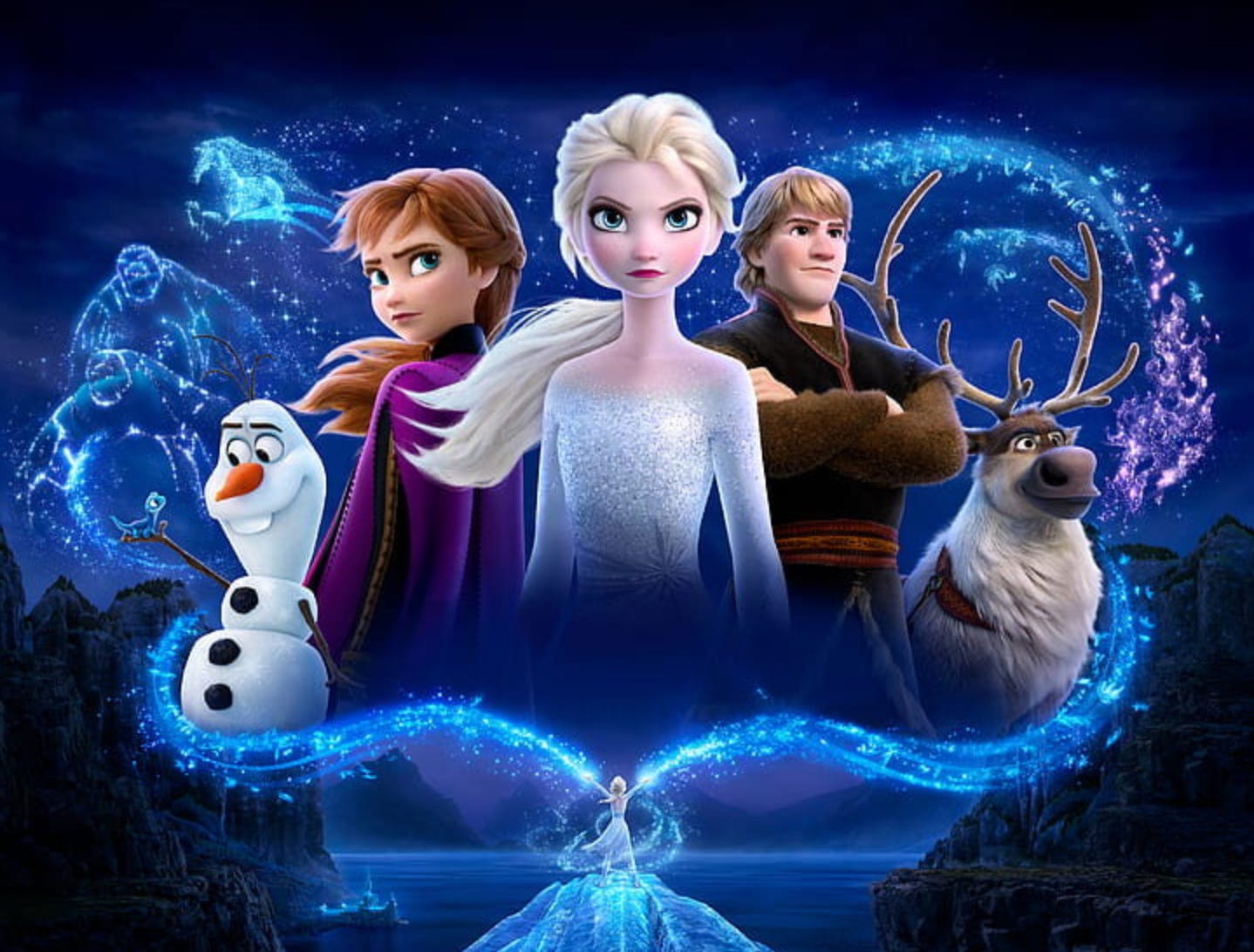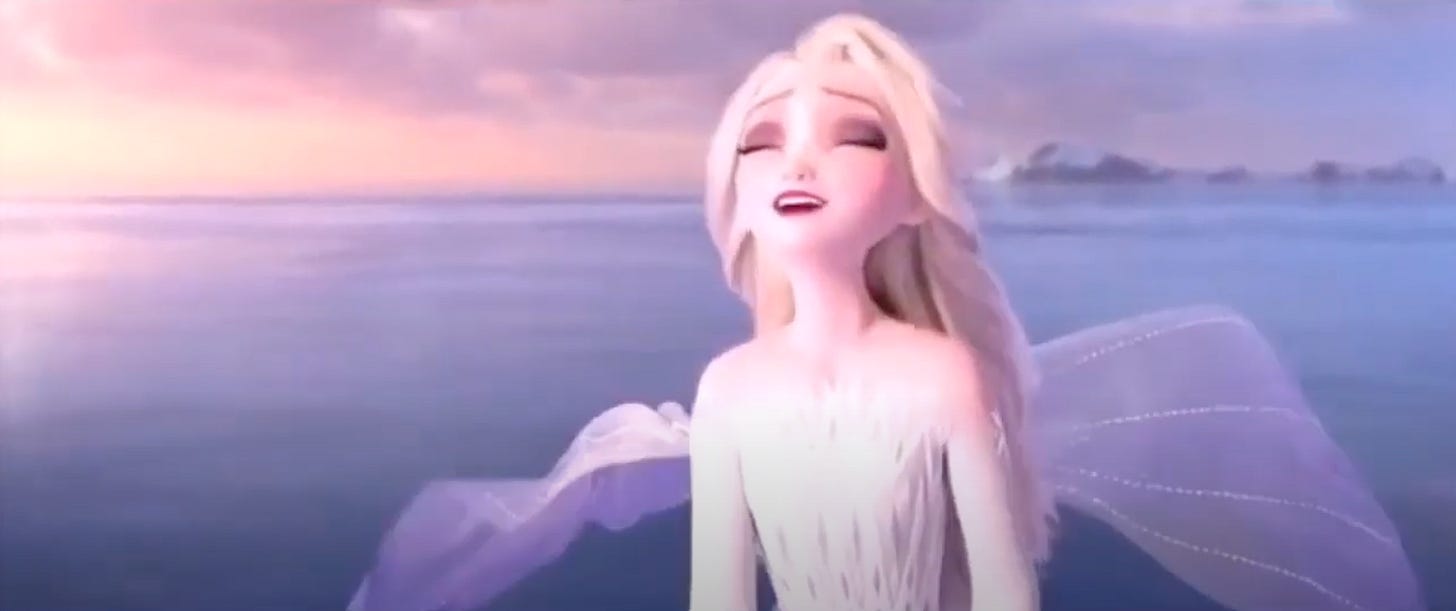Like many 90s kids, my formative years were imbued with whimsy and wonder, thanks to the extensive Disney film canon. For instance, name a soundtrack that slaps harder than The Sword in the Stone, which brought us sassy sugar bowls, didactic fish, thirsty squirrels, and the indisputable icon Madame Mim. Or show me a domestic goddess more comfortable in his masculinity than Kronk of The Emperor’s New Groove: a film that made me laugh so hard I temporarily feared for my sanity. Finally, I dare the The Real Housewives to produce a more riveting rivalry than the one between Flora and Merryweather in Sleeping Beauty (#makeitblue). Disney has gifted me many hours of magic and mirth.
However, as far as female role models are concerned, early Disney films fall tragically short. The female protagonists of Snow White, Sleeping Beauty, and Cinderella are denied proper hero’s journeys; instead, their narrative arcs move from states of passive obscurity and oppression (a victim of a failed assassination attempt, a maiden under house arrest, and an indentured servant, respectively) to social advancement and domestic bliss (i.e. hasty marriages to relative strangers… largely due to unsolicited kisses while semi-conscious).
As a child, I most identified with Belle’s character from Beauty and the Beast— She’s different! She likes books!— which I now find slightly problematic, as she was likely suffering from severe Stockholm Syndrome. Yikes. Similarly, I loved the centaur sequence from Fantasia… until I watched it as an adult and realized that this scene is essentially an animated Miss America pageant, in which women are dolled up and paraded around in the hopes of attracting male attention. I devoured these stories as a girl, and now realize how much they shaped my own complicated considerations of feminine beauty, goodness, and deference.
Enter: Pixar.
I’ve written here and here about the cinematic masterpiece known as Pixar’s Ratatouille. I dare anyone to watch Coco without dissolving into a puddle of tears. I thank Soul for positioning artistic flow states as portals to the divine. In general, Pixar’s films changed the landscape of animated film, creating works that appealed to both children and adults.
It wasn’t long before Disney as a whole followed suit. While these are not all Pixar collaborations, the 2010s ushered in an era of feminist-trending Disney films: including Brave (2012), Frozen (2013), Moana (2016), Frozen II (2019), and Encanto (2021). Here, I will focus on the soaring feats of feminist imagination woven throughout Frozen II.
Because my relationship to my sister is deep, fierce, and sacred, I was moved beyond words by Frozen. This first film’s “true love” story is that of two sisters, rather than any traditional romantic bond between man and woman. Frozen’s empowering storyline, along with its catchy songs and compelling characters, elicited a sensational response from growing girls across the globe. Frozen was a hit. Given the extraordinary response to Frozen, Disney creatives devoted countless hours to the making of Frozen II (I recommend watching this documentary about its development); challenging themselves to meet and surpass the high ideals of the first film.
The result is Frozen II: the second highest-grossing animated film of all time. Spoilers abound here, so if you haven’t yet seen the film, please proceed with caution as we advance together into this dark enchanted forest.
Watching Frozen II is like entering a Jungian dreamscape, filled with potent symbolism and numerous opportunities for individual and collective actualization. The film reckons with climate change, reparations and restorative justice, ancestral trauma, depression, grief, aging, death, and personal transformation.
… it also features a talking snowman.
Like the first Frozen film, Frozen II resists relegating its female protagonist (Elsa) to a romantic storyline— which frees her up for far more thrilling adventures. After the initial Frozen was released, many critics and fans read Elsa’s song Let It Go— with its sense of social alienation, inner turmoil, and eventual triumph— as a poignant queer anthem.
At the start of Frozen II, audiences aren’t privy to Elsa’s romantic yearnings, but she does appear restless and dissatisfied with her conventional royal life. Repeatedly, Elsa hears a haunting and ethereal female voice, which seems to conjure the dormant power bottled within her. Because Elsa trusts her own instincts and heeds the voice’s call, she inadvertently awakens the five elemental spirits (earth-air-water-fire) and disrupts the status quo; literally (in the form of an earthquake) shaking the foundations of normative rule. As a result, Elsa, her sister Anna, and their chosen family— yes, including the talking snowman— must venture into an Enchanted Forest to seek answers.
… Now our hero’s journey is a-cookin’!
The film refers to the Enchanted Forest as a place of pivotal transformation and discovery. In the forest, Elsa has the chance to become a Wild Woman (here I invoke allegorical readings like the ones contained in Women Who Run with the Wolves, Iron John, and Diana, Herself) as she encounters the unruly elements of nature.
Both Elsa and her sister Anna emerge from the Enchanted Forest as altered women. Together they meet the Northuldra people (inspired by the Sámi people), who introduce them to a more harmonious relationship with the natural world. Furthermore, the sisters must reckon with the legacy of their own family’s oppressive colonial past. Elsa and Anna recognize that the man-made symbol of human “progress” and innovation built by their murderous grandfather— a massive dam— must be dismantled in order to right past wrongs and save both the earth and humanity. Yep, the sisters must break literal barriers to free themselves and others.
Each sister embarks on an independent journey of the soul. In pursuing the four elements, Elsa discovers that she herself is the supernatural “fifth element” she’s been seeking all along: that mysterious voice and channel uniting the human and non-human realms. In Frozen II’s most affecting sequence, the spirit of Elsa’s mother sings to her: “You are the one you’ve been waiting for all of your life.”
Anna’s hero’s journey is equally powerful. Unlike Elsa, Anna does not possess magical powers, but her innate magic lies in her humanity: in her steadfastness, her loyalty, her warmth, and her relatability. Anna’s stirring mental health anthem The Next Right Thing provides something rare for a Disney film: instead of pathos, Anna serves up a sequence of bleak depression and hopelessness. Frozen II does not romanticize the human struggle to persevere. Instead, it illustrates the painstaking efforts of a woman attempting to move beyond her own paralysis and grief through tangible steps— to do “the next right thing.”
At the end of Frozen II, Elsa and Anna usher in an era of feminine rule, with Anna ascending as Queen of Arendelle and Elsa emerging as the protector of the Enchanted Forest. Together, sisterhood becomes the literal and figurative bridge that unites the human and natural worlds and provides a model of shared political power.
Would I make slight alterations to this film? Of course. I wish the kingdom of Arendelle had been relocated entirely, instead of being saved at the last minute. In true Disney tradition, Anna and Elsa are depicted as classically beautiful women with impossible waistlines and alarmingly long eyelashes. However, they possess— like recent Disney heroines Moana, Merida, and Mirabel— other salient qualities, like curiosity, self-possession, resourcefulness, intelligence, empathy, and grit. According to recent Disney press releases, Frozen III and Frozen IV sequels are in the works. Let’s hope that Disney continues its trend of “breaking the dam” and expanding its representations of animated female characters.
For now, I am moved to tears each time I watch the final shot of Frozen II. Elsa rides out alone to a glacier at the edge of the known world, free from the confines of palace life. She urges her horse onwards as she strikes out for the horizon, with an expression of utter contentment and wild abandon on her face.
You are the one you’ve been waiting for all of your life.
If you enjoy my writing, go wild and click the ❤️ or 🔄 button on this post so more people can discover it on Substack.






Continually amazed by the brilliance with which you see the strings connecting everything and connect the dots for us. Your articulation of Anna’s journey made me tear up. ♥️